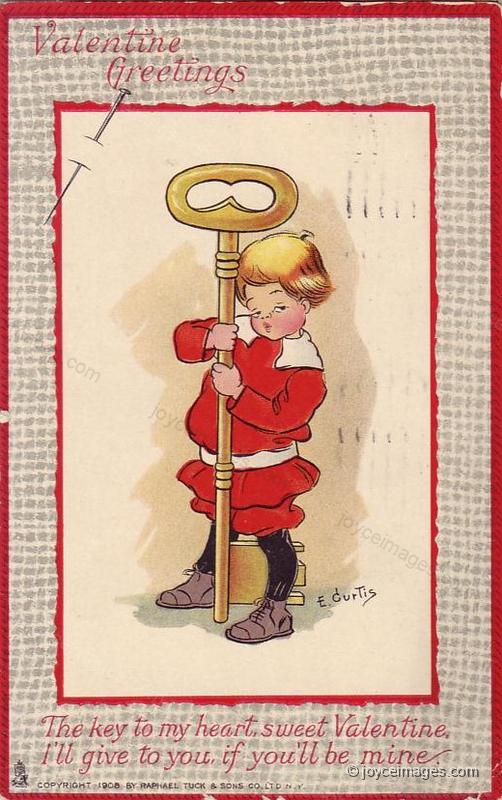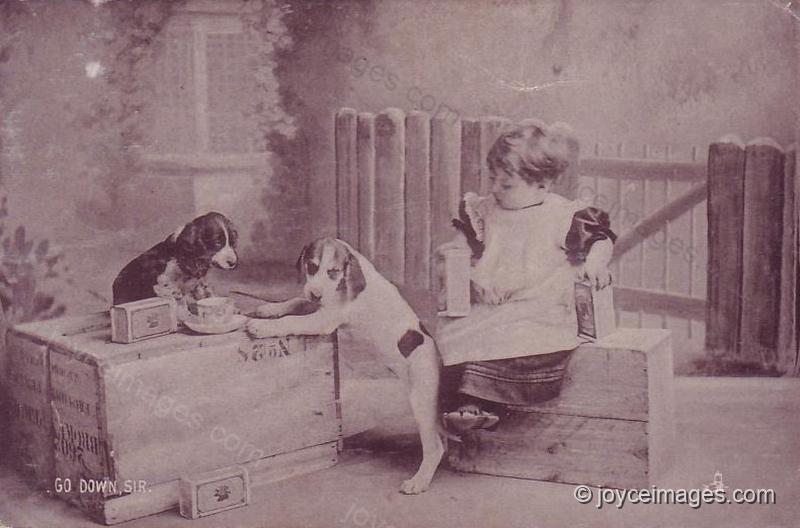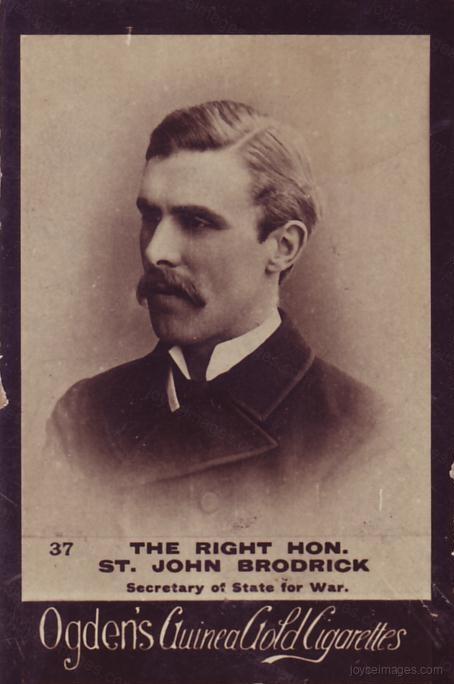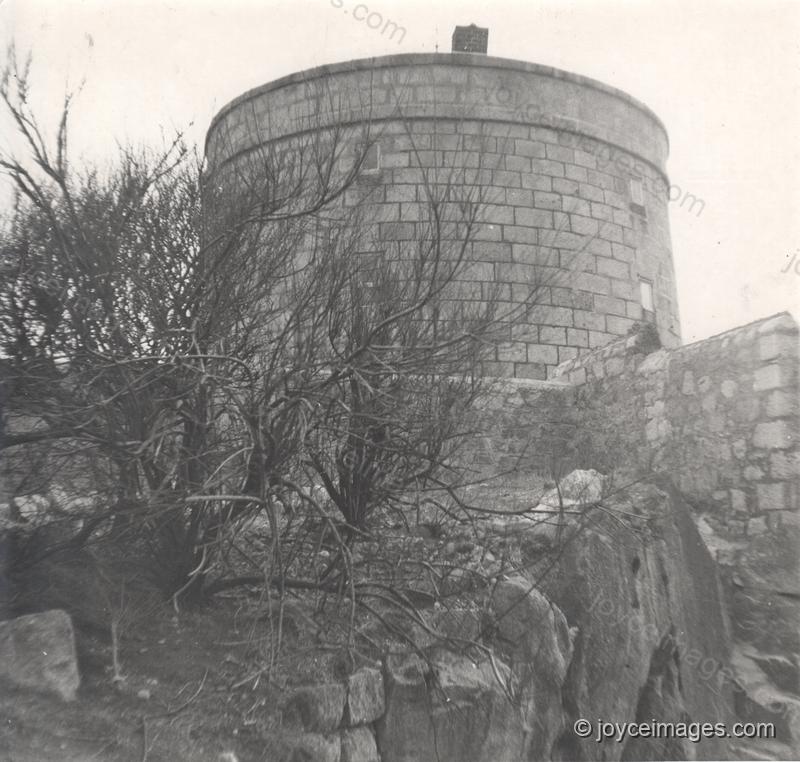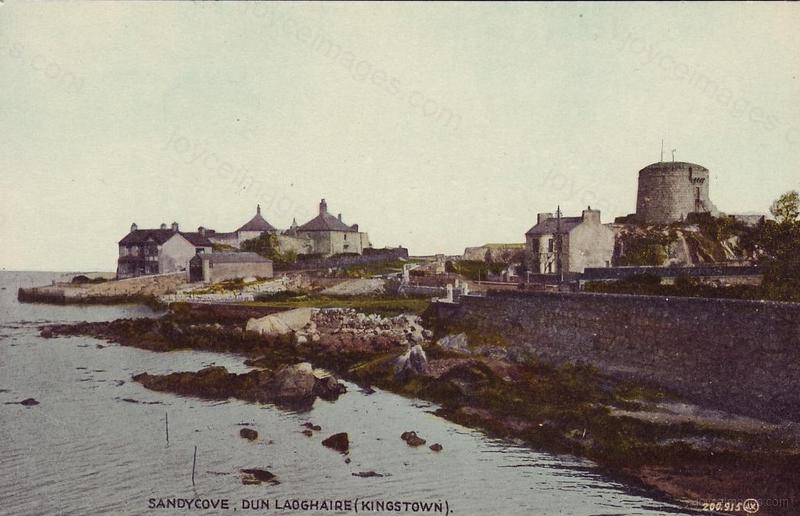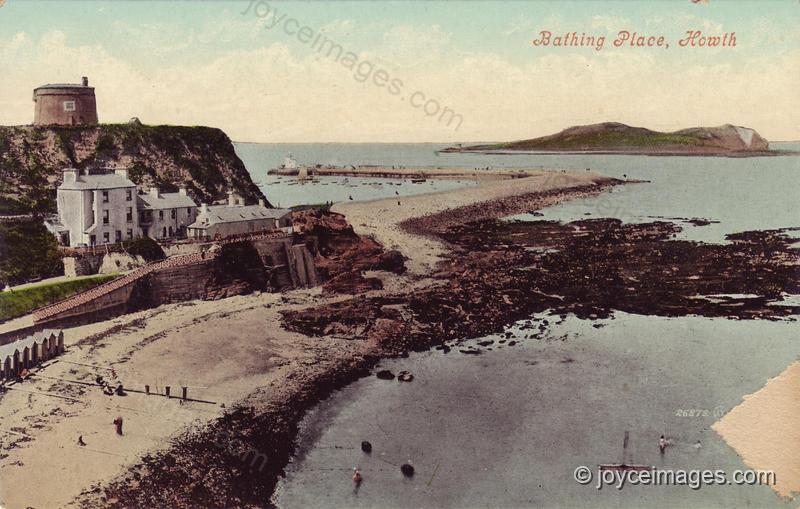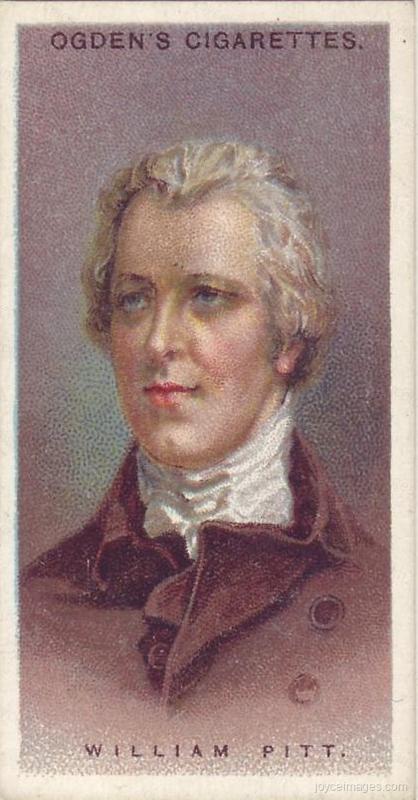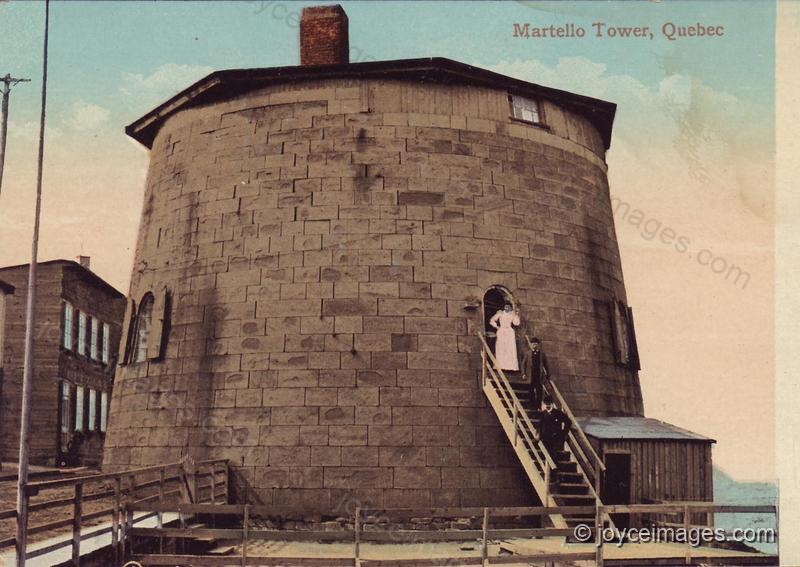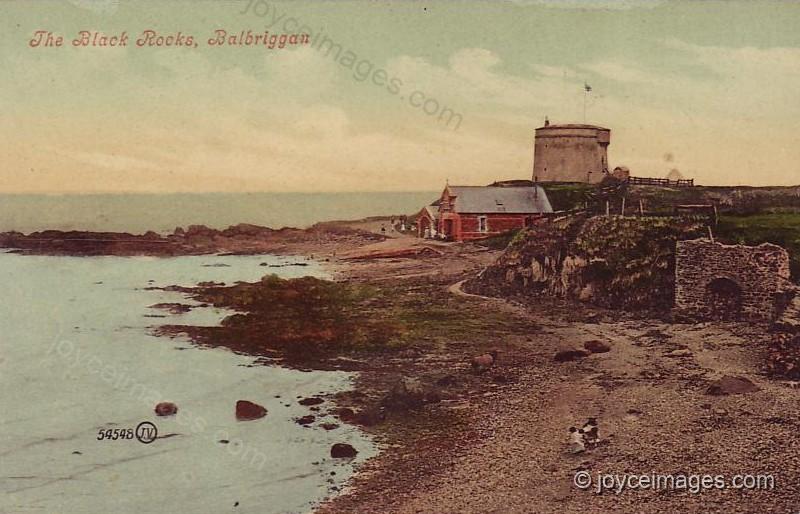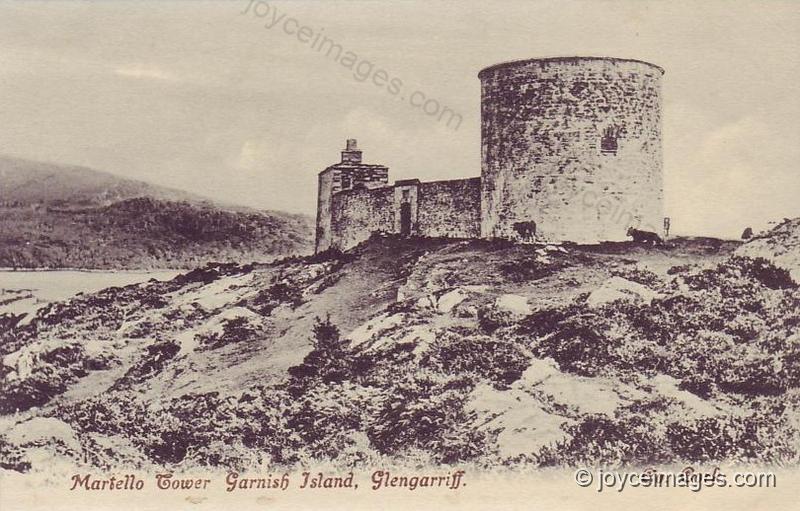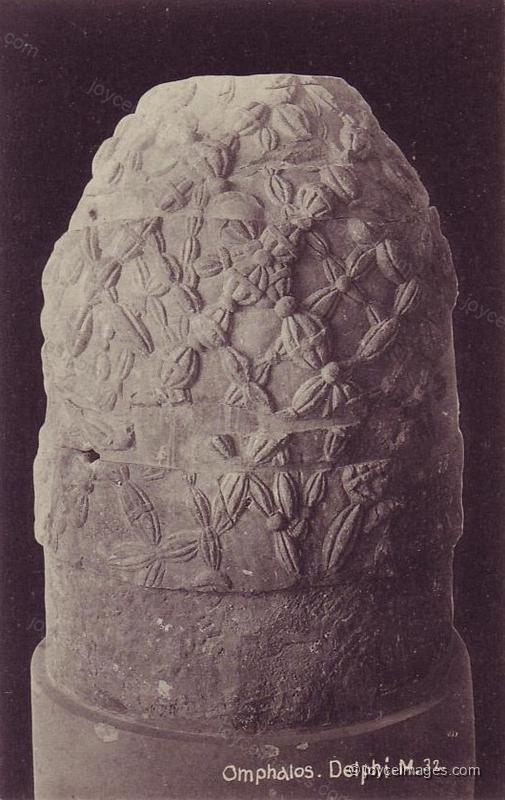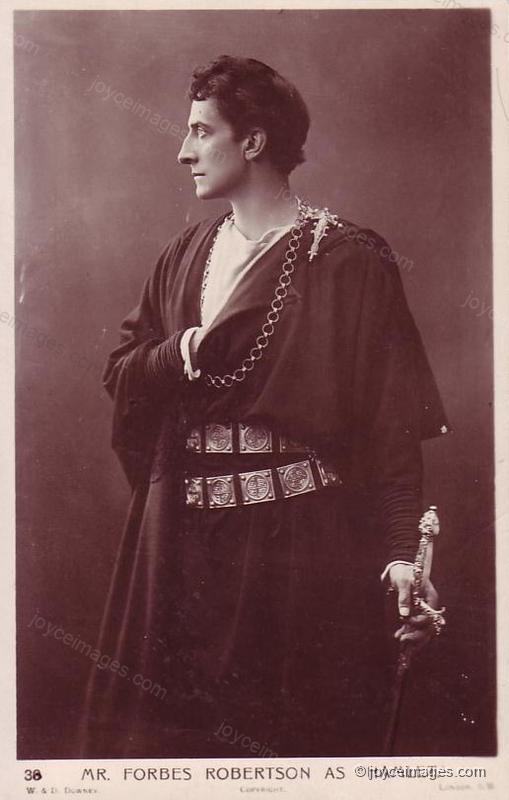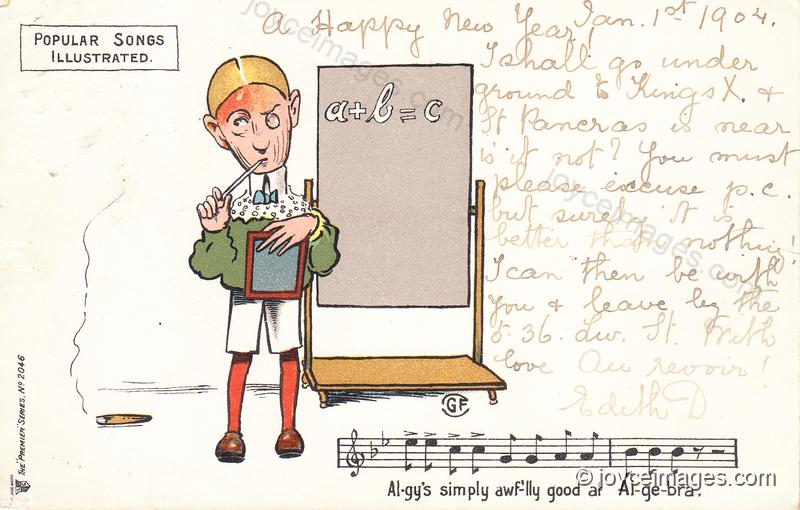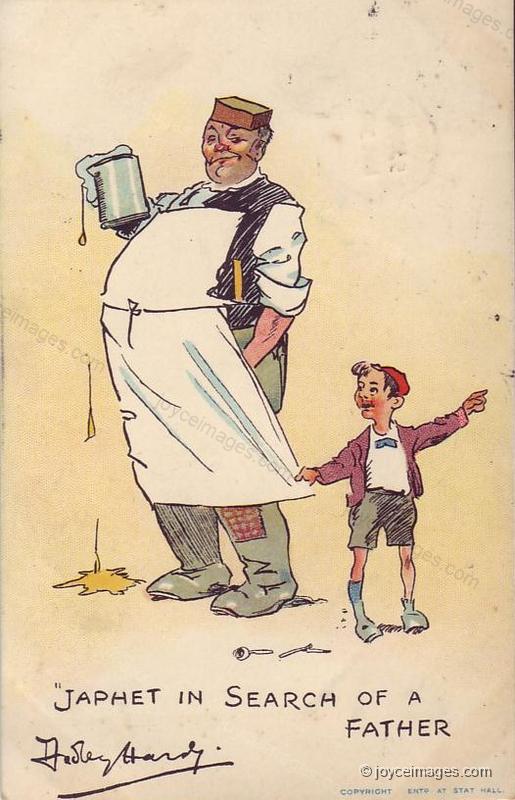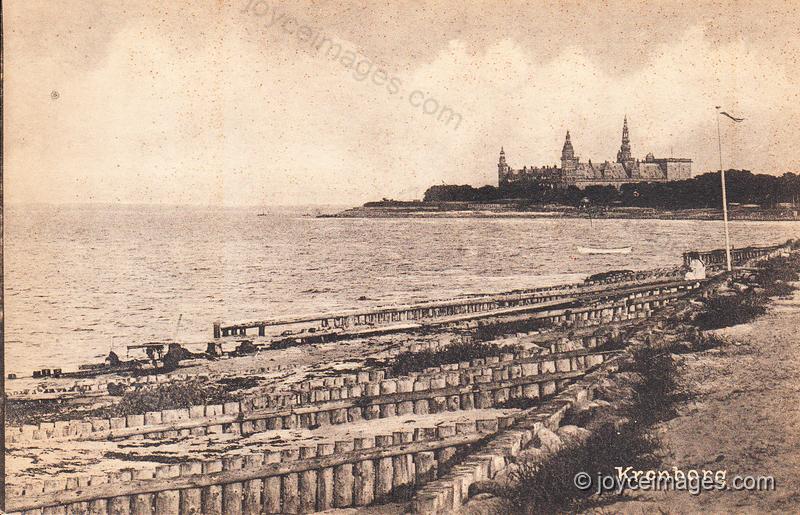"Stephen, taking his ashplant from its leaningplace, followed them out and, as they went down the ladder, pulled to the slow iron door and locked it. He put the huge key in his inner pocket.
At the foot of the ladder Buck Mulligan asked:
- Did you bring the key?
- I have it, Stephen said, preceding them." (U1.528)
At the foot of the ladder Buck Mulligan asked:
- Did you bring the key?
- I have it, Stephen said, preceding them." (U1.528)
"He walked on. Behind him he heard Buck Mulligan club with his heavy bathtowel the leader shoots of ferns or grasses.
- Down, sir! How dare you, sir!" (U1.534)
- Down, sir! How dare you, sir!" (U1.534)
"Haines asked:
- Do you pay rent for this tower?
- Twelve quid, Buck Mulligan said.
- To the secretary of state for war, Stephen added over his shoulder." (U1.537)
The position of Secretary of State for War, commonly called War Secretary, was a British cabinet-level position, first applied to Henry Dundas (appointed in 1794). In 1801 the post became that of Secretary of State for War and the Colonies. The position remained till 1964. The Secretary of State headed the War Office and was assisted by a Parliamentary Private Secretary, who was also a Member of Parliament, and a Military Secretary, who was a general. In 1904, the Secretary of State for War was Hugh Oakeley Arnold Foster (1903 - 1905); this card shows his predecessor the Rt Hon. St. John Brodrick (1900 - 1903).
- Do you pay rent for this tower?
- Twelve quid, Buck Mulligan said.
- To the secretary of state for war, Stephen added over his shoulder." (U1.537)
The position of Secretary of State for War, commonly called War Secretary, was a British cabinet-level position, first applied to Henry Dundas (appointed in 1794). In 1801 the post became that of Secretary of State for War and the Colonies. The position remained till 1964. The Secretary of State headed the War Office and was assisted by a Parliamentary Private Secretary, who was also a Member of Parliament, and a Military Secretary, who was a general. In 1904, the Secretary of State for War was Hugh Oakeley Arnold Foster (1903 - 1905); this card shows his predecessor the Rt Hon. St. John Brodrick (1900 - 1903).
"They halted while Haines surveyed the tower and said at last:
- Rather bleak in wintertime, I should say." (U1.541)
Photography by Aldo Palazzi.
- Rather bleak in wintertime, I should say." (U1.541)
Photography by Aldo Palazzi.
A standard Martello was 12-15 m (36-45 ft) in diameter, some 12m (40 ft) in height, with thick walls of heavy masonry. The interior was divided into three stories. The ground floor was the storerooms for ammunition and provisions. The first floor had several rooms, with fireplaces built into the walls for cooking and heating, and was intended for a garrison of 24 men and one officer. The roof was mounted with a 24-pounder cannon, able to rotate 360°. A well or cistern supplied the garrison with fresh water. A tower had a single doorway 5m (16 ft) off the ground that could only be reached by a removable ladder. A few were surrounded by a moat.
"Martello you call it?" (U1.542)
The Martello towers are small forts that were built as part of the British coastal defense during the Napoleonic wars. They were (mis)named after a gun tower at Mortella, Corsica that had caused the Royal Navy much trouble in 1794. This PC shows the one in Howth.
The Martello towers are small forts that were built as part of the British coastal defense during the Napoleonic wars. They were (mis)named after a gun tower at Mortella, Corsica that had caused the Royal Navy much trouble in 1794. This PC shows the one in Howth.
"-Billy Pitt had them built, Buck Mulligan said, when the French were on the sea." (U1.543)
In 1803 Boulogne was an enormous camp for a French Army of 130,000 men and 22,000 boats, ready (under Napoleon) to invade Britain. Captain W.H. Ford of the Royal Engineers proposed to erect a chain of square towers for defence along the British coast, modelled on the gun tower at Mortella, Corsica. Ford's proposal went up the chain of command to Brigadier-General Twiss, General Sir David Dundas (who had been at Mortella), the Secretary of State for War, then the Committee of Royal Engineers. It caused much controversy and division throughout Parliament and the Armed Forces. The Royal Navy was very enthusiastic for the project, while the Army was divided in its opinion. Some Royal Engineers favoured towers, but not the square design. Proceedings seemed endlessly delayed, but in 1804 William Pitt became Prime Minister and immediately liked the project. He sent Twiss to survey the south-east coastline of England and define suitable sites. Twiss's scheme was presented October 21st 1804 at the Rochester Conference in Kent, was approved by Billy Pitt, the circular design adopted, and building immediately started.
In 1803 Boulogne was an enormous camp for a French Army of 130,000 men and 22,000 boats, ready (under Napoleon) to invade Britain. Captain W.H. Ford of the Royal Engineers proposed to erect a chain of square towers for defence along the British coast, modelled on the gun tower at Mortella, Corsica. Ford's proposal went up the chain of command to Brigadier-General Twiss, General Sir David Dundas (who had been at Mortella), the Secretary of State for War, then the Committee of Royal Engineers. It caused much controversy and division throughout Parliament and the Armed Forces. The Royal Navy was very enthusiastic for the project, while the Army was divided in its opinion. Some Royal Engineers favoured towers, but not the square design. Proceedings seemed endlessly delayed, but in 1804 William Pitt became Prime Minister and immediately liked the project. He sent Twiss to survey the south-east coastline of England and define suitable sites. Twiss's scheme was presented October 21st 1804 at the Rochester Conference in Kent, was approved by Billy Pitt, the circular design adopted, and building immediately started.
Some 100 Martello towers were erected in England 1804 - 1812. Many were also built in British colonies including Ireland (50 towers), South Africa, America, Canada, and Minorca, some as late as the 1860s. This PC shows a Martello in Quebec, and nicely illustrates the above-ground entrance.
There were 12 Martellos in N. Dublin: 1 Red Rock Sutton, 2 Howth Harbour, 3 Ireland's Eye, 4 Carrickhill Portmarnock, 5 Robswall Malahide, 6 Balcarrick Donabate, 7 Portrane Tower Bay, 8 Rush, 9 Drumanagh Rush, 10 Shenick Island Skerries, 11 Red Island Skerries and 12 Balbriggan (shown) - and 16 in S. Dublin: 1 Bray Beach, 2 Bray Harbour, 3 Bray Corke Abbey, 4 Bray Mahera Point, 5 Killiney Beach, 6 Killiney Beach (Shanganagh), 7 Killiney Hill, 8 Killiney Ballybrack, 9 Dalkey Island, 10 Bullock Harbour, 11 Sandycove, 12 Glasthule Kingstown, 13 Kingstown Harbour, 14 Seapoint, 15 Booterstown, and 16 Sandymount.
Outside of Dublin, the largest number of Martellos was in Co. Cork. This PC shows the one on Garnish Island.
Of the original Martellos in Ireland, nine (7 in S. Dublin and 2 on Bere Island) have been demolished.
Not one of the Martello towers served their original anti-Napoleonic purpose!
Of the original Martellos in Ireland, nine (7 in S. Dublin and 2 on Bere Island) have been demolished.
Not one of the Martello towers served their original anti-Napoleonic purpose!
"But ours is the omphalos." (U1.544)
From Wikipedia: An omphalos is an ancient religious stone artifact, or baetylus. In Greek, the word omphalos means 'navel'. According to the ancient Greeks, Zeus sent out two eagles to fly across the world to meet at its center, the 'navel' of the world. Omphalos stones used to denote this point were erected in several areas surrounding the Mediterranean Sea; the most famous of those was at the oracle in Delphi (shown). Most accounts locate the Omphalos in the temple adyton near the Pythia. The stone itself (which may have been a copy) has a carving of a knotted net covering its surface, and has a hollow centre, which widens towards its base. The Omphalos at Delphi came to be identified as the stone which Rhea wrapped in swaddling clothes, pretending it was Zeus. This was to deceive Cronus, his father, who swallowed his children so they could not grow up and depose him as he had deposed his own father, Uranus.
From Wikipedia: An omphalos is an ancient religious stone artifact, or baetylus. In Greek, the word omphalos means 'navel'. According to the ancient Greeks, Zeus sent out two eagles to fly across the world to meet at its center, the 'navel' of the world. Omphalos stones used to denote this point were erected in several areas surrounding the Mediterranean Sea; the most famous of those was at the oracle in Delphi (shown). Most accounts locate the Omphalos in the temple adyton near the Pythia. The stone itself (which may have been a copy) has a carving of a knotted net covering its surface, and has a hollow centre, which widens towards its base. The Omphalos at Delphi came to be identified as the stone which Rhea wrapped in swaddling clothes, pretending it was Zeus. This was to deceive Cronus, his father, who swallowed his children so they could not grow up and depose him as he had deposed his own father, Uranus.
"- What is your idea of Hamlet? Haines asked Stephen.
- No, no, Buck Mulligan shouted in pain. I'm not equal to Thomas Aquinas and the fiftyfive reasons he has made to prop it up. Wait till I have a few pints in me first.
He turned to Stephen, saying, as he pulled down neatly the peaks of his primrose waistcoat:
- You couldn't manage it under three pints, Kinch, could you?
- It has waited so long, Stephen said listlessly, it can wait longer.
- You pique my curiosity, Haines said amiably. Is it some paradox?
- Pooh! Buck Mulligan said. We have grown out of Wilde and paradoxes." (U1.545)
- No, no, Buck Mulligan shouted in pain. I'm not equal to Thomas Aquinas and the fiftyfive reasons he has made to prop it up. Wait till I have a few pints in me first.
He turned to Stephen, saying, as he pulled down neatly the peaks of his primrose waistcoat:
- You couldn't manage it under three pints, Kinch, could you?
- It has waited so long, Stephen said listlessly, it can wait longer.
- You pique my curiosity, Haines said amiably. Is it some paradox?
- Pooh! Buck Mulligan said. We have grown out of Wilde and paradoxes." (U1.545)
" It's quite simple. He proves by algebra that Hamlet's grandson is Shakespeare's grandfather and that he himself is the ghost of his own father. "(U1.555)
"- What? Haines said, beginning to point at Stephen. He himself?
Buck Mulligan slung his towel stolewise round his neck and, bending in loose laughter, said to Stephen's ear:
- O, shade of Kinch the elder! Japhet in search of a father!
—We're always tired in the morning, Stephen said to Haines. And it is rather long to tell.
Buck Mulligan, walking forward again, raised his hands.
— The sacred pint alone can unbind the tongue of Dedalus, he said." (U1.558)
In the Bible, Japhet is the son of Noah.
'Japhet in Search of a Father' is the title of a father-quest novel by Captain Frederick Marryat (1792 - 1848), published in 1836.
Buck Mulligan slung his towel stolewise round his neck and, bending in loose laughter, said to Stephen's ear:
- O, shade of Kinch the elder! Japhet in search of a father!
—We're always tired in the morning, Stephen said to Haines. And it is rather long to tell.
Buck Mulligan, walking forward again, raised his hands.
— The sacred pint alone can unbind the tongue of Dedalus, he said." (U1.558)
In the Bible, Japhet is the son of Noah.
'Japhet in Search of a Father' is the title of a father-quest novel by Captain Frederick Marryat (1792 - 1848), published in 1836.
"— I mean to say, Haines explained to Stephen as they followed, this tower and these cliffs here remind me somehow of Elsinore. That beetles o'er his base into the sea, isn't it?
Buck Mulligan turned suddenly for an instant towards Stephen but did not speak. In the bright silent instant Stephen saw his own image in cheap dusty mourning between their gay attires.
— It's a wonderful tale, Haines said, bringing them to halt again.: (U1.566)
Buck Mulligan turned suddenly for an instant towards Stephen but did not speak. In the bright silent instant Stephen saw his own image in cheap dusty mourning between their gay attires.
— It's a wonderful tale, Haines said, bringing them to halt again.: (U1.566)
"Eyes, pale as the sea the wind had freshened, paler, firm and prudent. The seas' ruler, he gazed southward over the bay, empty save for the smokeplume of the mailboat vague on the bright skyline and a sail tacking by the Muglins." (U1.573)
This PC shows RMS (= Royal Mail Service) Leinster, one of the mailboats in service on the Irish Sea in 1904. The others were RMS Munster, Ulster, and Connaught. They carried the mail from Kingstown to Holyhead (Wales), to be distributed by train to its various destinations. Mailboats also took passengers.
This PC shows RMS (= Royal Mail Service) Leinster, one of the mailboats in service on the Irish Sea in 1904. The others were RMS Munster, Ulster, and Connaught. They carried the mail from Kingstown to Holyhead (Wales), to be distributed by train to its various destinations. Mailboats also took passengers.
